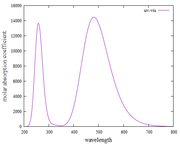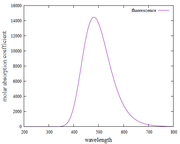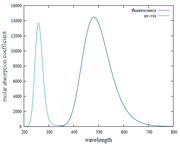Thanks again for your answer
R.
]]>If you purpose is simply calculating S0-T1 energy separation at T1 geometry, I suggest using delta-SCF (i.e. UKS) method to optimize the T1 geometry and calculate the energies of the S0 and T1 states at the optimized T1 geometry. This is because UKS is much cheaper than TDDFT since it is a single-determinant method, and UKS calculation fully takes into account the orbital relaxation effect, so theoretically the result should be better.
However, if you need to compare T1 energy with e.g. S1 energy at the T1 geometry, I suggest optimizing T1 using UKS, and then calculate both S1 and T1 energies using TDDFT. This is because usually S1 can only be calculated using TDDFT (rather than UKS), and only S1 and T1 energies calculated via the same method is comparable.
Optimizing T1 using TDDFT is highly deprecated, because TDDFT optimization is significantly more expensive than UKS, and the result is worse because of neglect of orbital relaxation.
]]>(1) Eem1 = ET1 - ES0 ---> delta scf method
(2) Eem2 = ET1 - ES0' --> TDDFT ( I added ' since the S0 using the T1 geometry would not be equal to the optimized S0)
So, which one would be the most appropriate? It seems to me that (1), as long as the S0 and T1 geometries were notably different
Thank you in advance for your response and feedback on this issue.
R.
]]>To compare with experimental fluorescence spectrum, you do not need to pay attention to specific unit of Y-axis of simulated fluorescence spectrum, you can arbitrarily scale the Y-axis data to make simulated spectrum best match the experimental one for easier comparison.
]]>Other than that,
Why is the Y-axis in the fluorescence spectrum the molar absorption coefficient? not absorbance
How can I find the pathlength and concentration values to convert the molar absorption coefficient to absorbance? my goal is to make the absorption spectrum [wavelength (nm) versus absorbance (a.u)]
Many thanks, Prof. Tian Lu
]]>I have found plots of UV-vis and fluorescence spectra using Multiwfn. However, when I observe it, does this approach always show the same fluorescence spectra as the UV-vis spectra in the first excitation states?
Please, give me some publications that have used the Kasha rules approach (using Multiwfn software) to simulate fluorescence with the same plotting spectra that I found?
Thanks, advanced
]]>
I have done it again as suggested by Prof. Tian Lu. However, the fluorescence spectrum results are still the same as the absorption spectrum. Thank you, if I'm wrong, please correct me, it will be very helpful for me.
step-by-step I did visualize the fluorescence spectrum as follows
]]>(1) To plot absorption spectrum, you should do excited state calculation at optimized ground state geometry. To plot fluorescence spectrum, you should do excited state calculation at optimized S1 state geometry (assume that Kasha's rule is valid for present system)
(2) To plot fluorescence spectrum, in Multiwfn, you should set oscillator strengths of all excited states other than S1 to zero, because only the S1 is emission state.
]]>thank you, it will be very helpful for me.
]]>Thank you, it's so clear for me now.
I'm using Multiwfn to read my results of Gaussian 09, and I have some problem in Enery Gap, from TDOS spectrum I have 3.4eV and from experiment 2.9eV.
So there is a difference between values. I'm wondering if there is a problem in the model chossen (or in an another way which model should I choose to change the value of Eg and be near to experiment).
I'm using # td b3lyp/6-311++g(d,p).
Please note that there are three kinds of well-known gaps, namely HOMO-LUMO gap, optical gap and fundamental gap, they must be distinguished since the values are very different, see Mater. Horiz., 1, 17 (2014) for introduction. For a molecule system, HOMO-LUMO gap is not a physically observed quantity, in other words, it cannot be experimentally determined at all. The HOMO-LUMO gap can be directly obtained based on HOMO and LUMO energies, it is reported in console window of Multiwfn after you entering main function 0 if .fch file is used as input, neither TDDFT calculation nor plotting TDOS is needed.
Before trying to compare calculation result with experimental value, please first make clear which kind of gap is the one you are really interested in.
PS: I wrote a very detailed article discussing the concept of HOMO, LUMO and gap, see http://www.shanxitv.org/543, however it was written in Chinese, you may use Google translator to understand the basic content.
]]>I'm using Multiwfn to read my results of Gaussian 09, and I have some problem in Enery Gap, from TDOS spectrum I have 3.4eV and from experiment 2.9eV.
So there is a difference between values. I'm wondering if there is a problem in the model chossen (or in an another way which model should I choose to change the value of Eg and be near to experiment).
I'm using # td b3lyp/6-311++g(d,p).
]]>Although there is an experimental technique named fluorescence excitation spectrum, which detects the fluorescence intensity at specific wavelength by scanning wavelength of incident light, it is not directly related to the present topic.
]]>Thank you, if I'm wrong, please correct me, it will be very helpful for me.]]>










